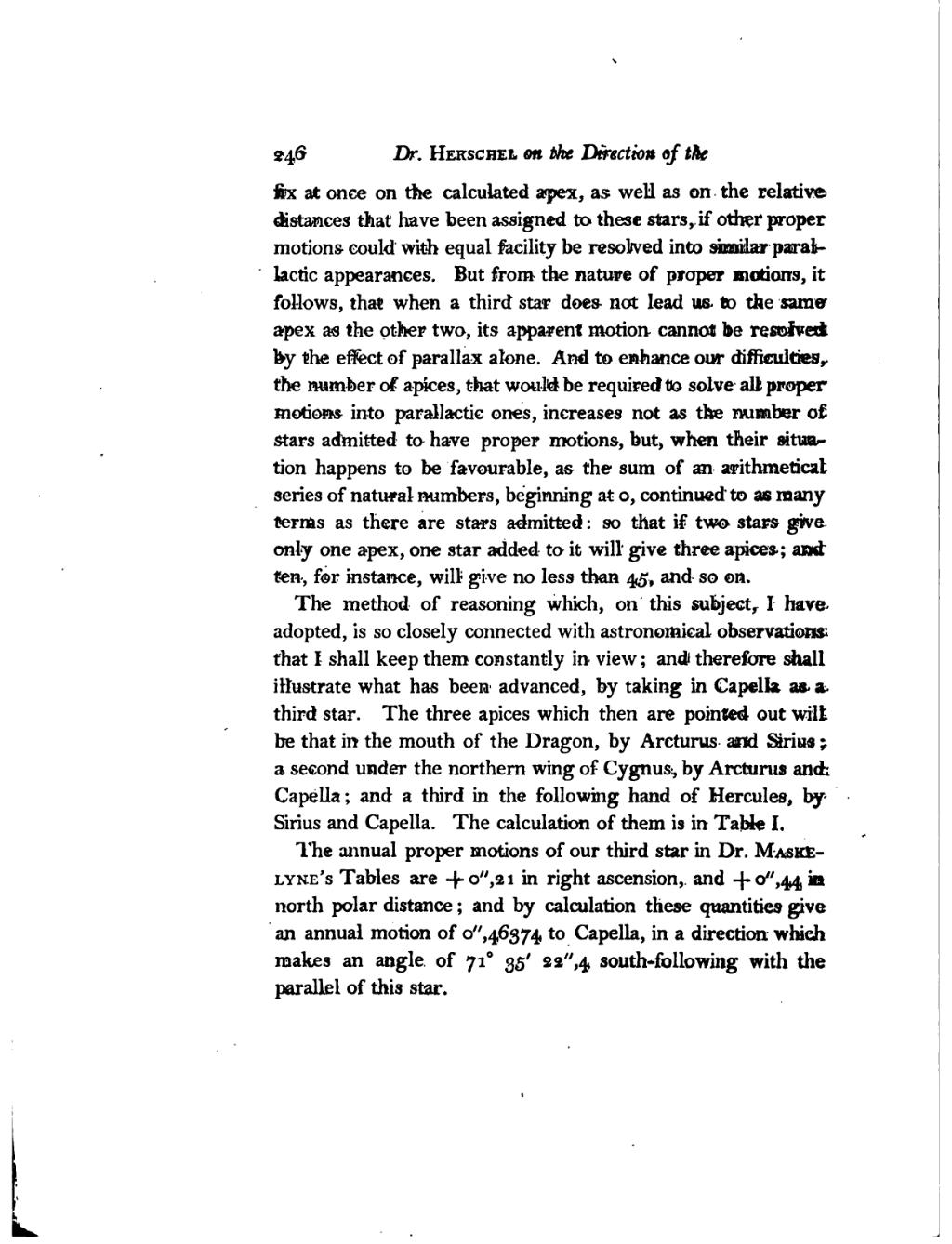fix at once on the calculated apex, as well as on the relative distances that have been assigned to these stars, if other proper motions could with equal facility be resolved into similar parallactic appearances. But from the nature of proper motions, it follows, that when a third star does not lead us to the same apex as the other two, its apparent motion cannot be resolved by the effect of parallax alone. And to enhance our difficulties, the number of apices, that would be required to solve all proper motions into parallactic ones, increases not as the number of stars admitted to have proper motions, but, when their situation happens to be favourable, as the sum of an arithmetical series of natural numbers, beginning at 0, continued to as many terms as there are stars admitted: so that if two stars give only one apex, one star added to it will give three apices; and ten, for instance, will give no less than 45, and so on.
The method of reasoning which, on this subject, I have adopted, is so closely connected with astronomical observations that I shall keep them constantly in view; and therefore shall illustrate what has been advanced, by taking in Capella as a third star. The three apices which then are pointed out wilt be that in the mouth of the Dragon, by Arcturus and Sirius; a second under the northern wing of Cygnus, by Arcturus and Capella; and a third in the following hand of Hercules, by Sirius and Capella. The calculation of them is in Table I,
The annual proper motions of our third star in Dr. Maskelyne's Tables are +0",21 in right ascension, and +0",44 in north polar distance; and by calculation these quantities give an annual motion of 0",46374 to Capella, in a direction which makes an angle of 71° 35' 22",4 south-following with the parallel of this star.
